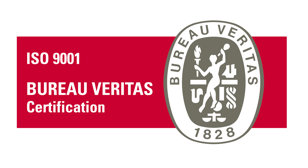Article

Yu / Apple: the long reaching effects of the Alice decision on patent eligibility in the USA
The first hurdle to patent an invention in the USA is to pass the patent eligibility bar of 35 U.S.C. 101. Patent eligibility is for "any new and useful process, machine, manufacture, or composition of matter, or any new and useful improvement thereof." So far, so good.
But with the advance of computerization, 35 U.S.C. 101 has become a hot topic making some methods and even some devices abstract ideas, and therefore non-patentable.
The 101 question was first raised for business and financial method cases in the early 2010s. Bilski v. Kappos (2010) related to hedging and Alice v. CLS Bank to escrow (2014). Case law then focused on computer implemented inventions and software, leading the United States Patent & Trademark Office (USPTO) in 2019 to propose a Revised Patent Subject Matter Eligibility Guidance (2019 PEG). The guidelines propose a subject matter eligibility test in several steps (hereinafter the “Alice Test”), as developed in Alice and in Mayo V. Prometheus Laboratories, to determine if an invention is patentable. And now recently, decisions have been rendered which extend the subject matter ineligibility to devices other than computers and software.
In the most recent decision Yu v. Apple (June 11, 2021), the CAFC considered U.S. Pat. No. 6,611,289 to a specialized camera as patent-ineligible. Claim 1 was directed to an ‘improved digital camera’ and had many technical features: two image sensors, two lenses, an analog-to-digital converting circuitry, an image memory, a digital image processor. However, as interpreted by the court, claim 1 was in essence directed to ‘taking two pictures and using these pictures to enhance each other in some way.’ ; and that made it an abstract idea, and ultimately unpatentable.
To arrive to that conclusion the majority considered that Step 1 of the Alice Test, lead to claim 1 being ‘directed to a result or effect that itself is the abstract idea and merely invoke[s] generic processes and machinery’ rather than ‘a specific means or method that improves the relevant technology.’
Dissent was however voiced. Judge Newman considered that “This camera is a mechanical and electronic device of defined structure and mechanism; it is not an ‘abstract idea.’ . . . Claim 1 is for a digital camera having a designated structure and mechanism that perform specified functions; claim 1 is not for the general idea of enhancing camera images. The camera of the ’289 patent may or may not ultimately satisfy all the substantive requirements of patentability, for this is an active field of technology. However, that does not convert a mechanical/electronic device into an abstract idea.”
Newman’s dissenting opinion also commented the overreaching of such a decision as well as the uncertainty that it brings to patents as a whole:
“In the current state of Section 101 jurisprudence, inconsistency and unpredictability of adjudication have destabilized technologic development in important fields of commerce. Although today’s Section 101 uncertainties have arisen primarily in the biological and computer-implemented technologies, all fields are affected. The case before us enlarges this instability in all fields, for the court holds that the question of whether the components of a new device are well-known and conventional affects Section 101 eligibility, without reaching the patentability criteria of novelty and nonobviousness.”
Yu v. Apple is not the first decision by the CAFC branching outside of computer implementation. Back in 2019, the CAFC in ChargePoint v. SemaConnect considered an electric car charger as an abstract idea since it dealt in essence with communication over a network. In 2019 also, the CAFC found a garage door opener in Chamberlain Group v. Techtronic Industrie to be abstract since it was geared to a manner of sending and experiencing data.
The case law is showing an expansion of the subject-matter ineligibility to domains that were traditionally considered as robust to the question, such as mechanical devices. At this point, it is unclear how apparatus claims integrating some ‘soft’ features will be treated as being abstract or not. Patent drafting may be impacted by this recent trend, focusing on the inventiveness of the soft features integrated in an otherwise ordinary apparatus, or emphasizing the uniqueness of the apparatus implementing these soft features.

































